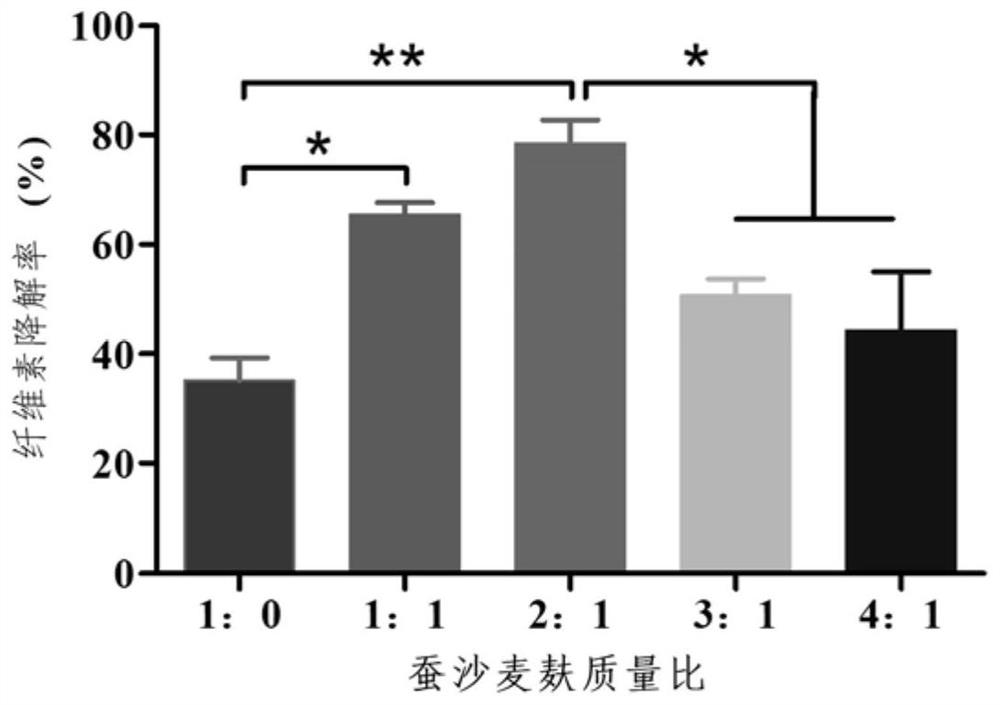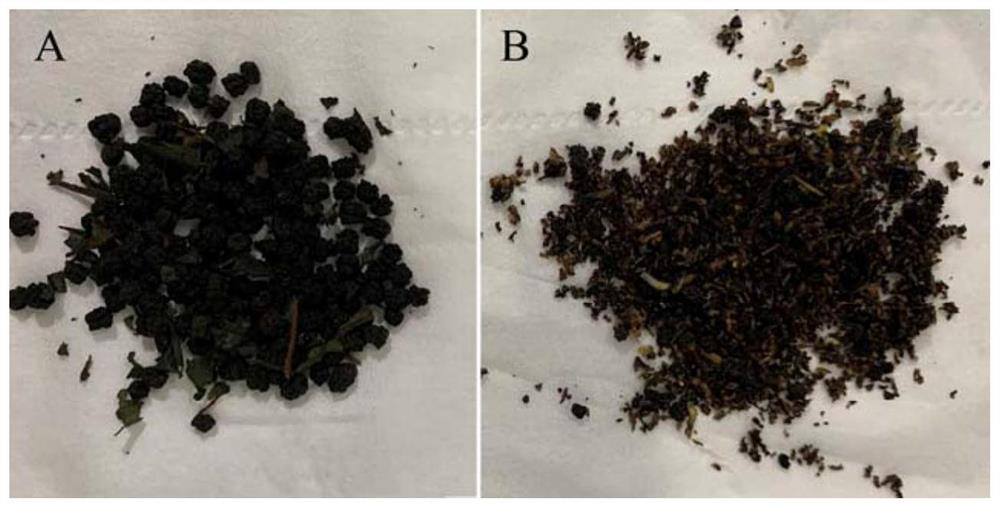Method for biologically converting silkworm excrement waste by utilizing fly maggots, and application of product of method
A technology of biotransformation and waste, applied in the fields of application, climate change adaptation, bio-organic part treatment, etc., to achieve thorough treatment, short treatment cycle, and widen raw material channels
- Summary
- Abstract
- Description
- Claims
- Application Information
AI Technical Summary
Problems solved by technology
Method used
Image
Examples
Embodiment 1
[0027] Embodiment 1: High-efficiency large-scale housefly species breeding method
[0028] Collection of fly species and clean breeding and domestication: collect local wild houseflies, place them in 80cm×40cm×40cm stainless steel clean large mesh cages after biological identification, and feed adult flies with a 1:1 mixture of milk powder and white sugar powder. The larvae are cultured with a 1:2 mixture of wheat bran and silkworm excrement. The room temperature is controlled at 20°C-30°C, the relative humidity is at 70%±10%, the light rhythm is based on the local environment, and the humidity of the wheat bran egg collection is at 65%. On the fifth day, the 3rd instar larvae with larger body weight and higher activity were collected to pupate in wheat bran with 20% water content, and then the larger fly pupae were selected and placed in clean breeding cages to emerge as flies. The mixture of milk powder and white sugar powder is used to raise eggs and enter the next clean fe...
Embodiment 2
[0034] Example 2: Efficient large-scale fly maggot biotransformation silkworm excrement degradation cellulose system
[0035] This embodiment is a method for harmless treatment of silkworm excrement by using fly maggots to accelerate the degradation of silkworm excrement cellulose. For large-scale sericulture breeding bases, the hardware facilities are planned first. In this embodiment, the collected silkworm excrement waste can be directly used for fly maggot biotransformation after pretreatment, and the humidity of the silkworm excrement matrix is controlled between 60%±10% through pretreatment.
[0036] Since silkworm excrement is rich in cellulose, the degradation rate of cellulose is the main factor affecting the biotransformation efficiency of fly maggots. Therefore, it is necessary to screen the optimal ratio (mass ratio) of silkworm excrement and wheat bran mixed matrix to determine which is suitable for the growth and development of fly maggots. It can also efficien...
Embodiment 3
[0040] Embodiment 3: Effect of fly maggot protein feed on growth performance of broiler chickens
[0041] The fly maggots treated for 4 days in Example 2 were separated from feces, and the separated fly maggot larvae were rinsed three times with water, filtered and dried, and stored at -20°C for later use.
[0042] Preparation of fly maggot powder: thaw fly maggots stored at -20°C, dry at 50°C for 24 hours, crush the dried fly maggots with a homogenizer, pass through a 40-mesh sieve, seal, and store at -20°C for later use.
PUM
 Login to View More
Login to View More Abstract
Description
Claims
Application Information
 Login to View More
Login to View More - R&D Engineer
- R&D Manager
- IP Professional
- Industry Leading Data Capabilities
- Powerful AI technology
- Patent DNA Extraction
Browse by: Latest US Patents, China's latest patents, Technical Efficacy Thesaurus, Application Domain, Technology Topic, Popular Technical Reports.
© 2024 PatSnap. All rights reserved.Legal|Privacy policy|Modern Slavery Act Transparency Statement|Sitemap|About US| Contact US: help@patsnap.com










